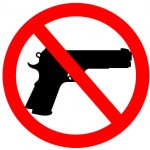by Joseph P. Tartaro | Executive Editor
 Like the Wizard of Oz, New York Gov. Mario Cuomo (D) never wanted anyone to look behind the curtain of his January 2013 Secure Ammunition and Firearms Enforcement (SAFE) Act. However, now some of the numbers seem to be moving into public view.
Like the Wizard of Oz, New York Gov. Mario Cuomo (D) never wanted anyone to look behind the curtain of his January 2013 Secure Ammunition and Firearms Enforcement (SAFE) Act. However, now some of the numbers seem to be moving into public view.
Both opponents of the SAFE Act and journalists have been trying to determine how many so-called assault weapons have been registered under the Act in an effort to determine the rate of compliance among other things, but the NYS Police have refused to release that information under provisions of state and federal Freedom of Information Act laws.
The superintendent of the State Police serves at the pleasure of the governor and appears unlikely to release any of the figures which the Act’s language was clearly written to avoid unless Cuomo approves.
However, an Oct. 3, 2014 opinion letter from the New York State Committee on Open Government regarding FOIL application for “the number of ‘assault weapons’ which have been registered” under the SAFE Act opens the door for a look behind the curtain for disclosure of cumulative numbers. If the State Police continue to withhold those numbers, the opinion may support further litigation to get them released.
This is a significant win for transparency, which Cuomo had tried to avoid.
Two weeks later, the New York Times reported some numbers on another aspect of the SAFE Act, the state database it established on the number of people who have been denied the right to possess arms because of mental illness.
The Times reported that more than 40,000 entries have been entered into the database calling it “a previously undisclosed figure that has raised concerns among some mental health advocates that too many people have been categorized as dangerous.”
The law, better known for its ban on so-called assault weapons and firearms feeding devices of over seven rounds, compels licensed mental health professionals in the state to report any patient “likely to engage in conduct that would result in serious harm to self or others.”
There has always been concern among mental health professionals that this reporting requirement could not only include people who are clearly not a danger to themselves or anyone else but discourage people with any mental illness from seeking professional help.
The Times article cited the many concerns regarding that provision of the SAFE Act, for which aggregate numbers are now available, and reported that less than 300 of the 40,000 reported had also possessed firearms. Under the Act, the 62 counties in the state are made responsible for confiscating any firearms possessed by patients added to the state database.
In one of the first such cases reported early after the Act went into effect, it turned out that the state-licensed handgun owner had been improperly identified on the basis of prescribed medications, not because anyone thought he was a danger to himself or others. With help from a pro-gun attorney, that individual got his handguns back within a few weeks, but not without distress, inconvenience and cost.
Now, while the Times article reveals public concerns about at least one provision of the SAFE Act, the raw registration numbers for “assault weapons” may also come into view.
The Committee on Open Government’s opinion may help unlock another of the SAFE Act wizard’s secrets.
That opinion states, in part:
In our opinion, none of the discretionary exceptions appearing in §87(2) of the Freedom of Information Law would permit the State Police to deny access to aggregate data regarding firearm and assault weapon permits reported without identification of individual applicants. On the contrary, we believe that data of that nature must be disclosed pursuant to §87(2)(g)(i), which specifies that ‘statistical or factual tabulations or data’ contained within internal agency records be disclosed. Accordingly, it is our opinion that such non-identifying data is required to be disclosed upon request.”
The next move belongs to the wizard, but probably not until after the Nov. 4 election.



